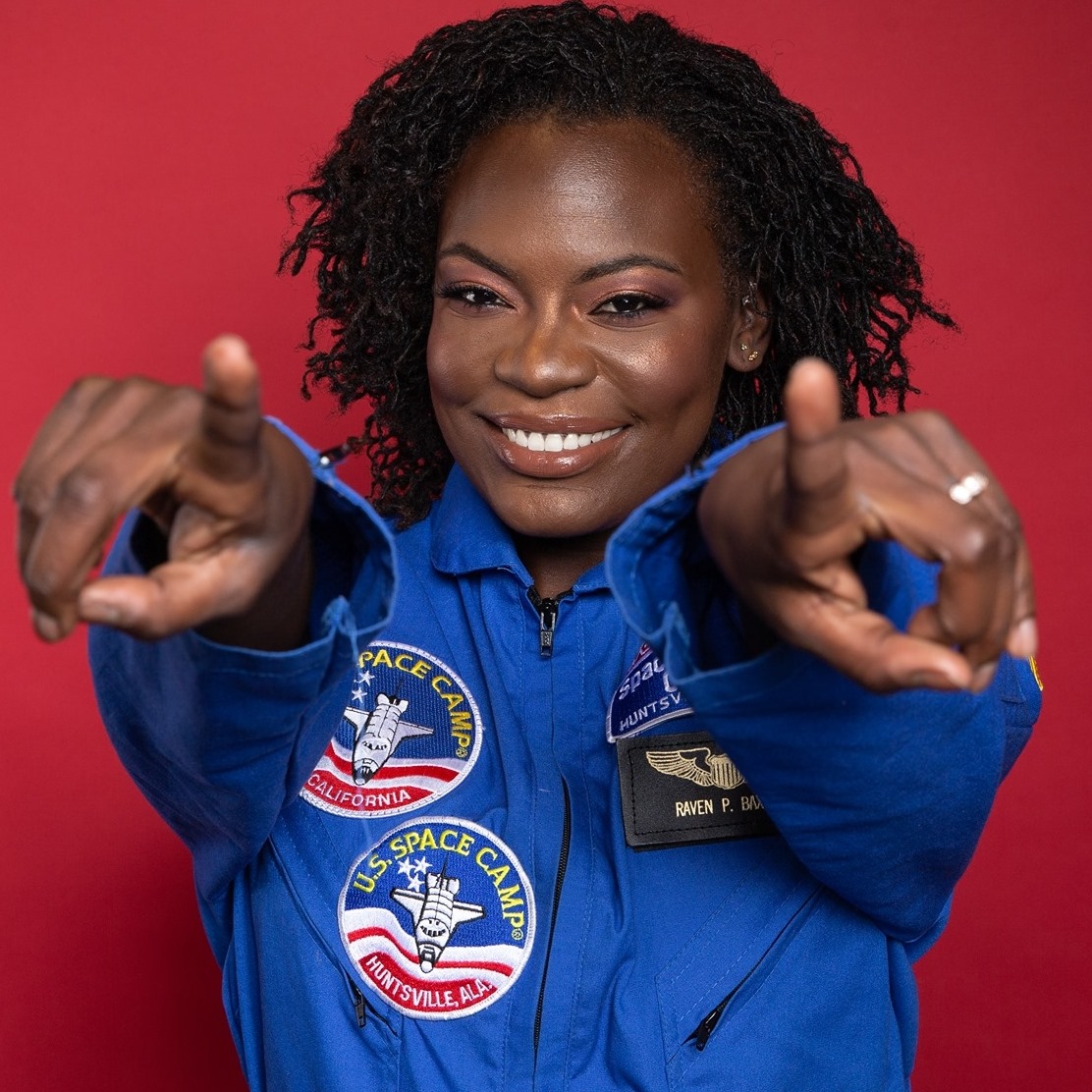Didn’t Jay Z and Einstein basically do the same thing? They looked at the world around them and tried their best to make sense of it. They were inventive, experimental communicators — unafraid to fail and try again.
Across the US, there’s a growing movement of educators who use that theory to reach communities typically ignored by mainstream education.
Here are five of the most innovative people combining hip hop and science education.
Raven Baxter

Photo on the Raven the Science Maven Facebook page
Raven Baxter, aka the Science Maven, aka “science trap queen”, makes killer music videos with women in STEM — changing the narrative of what a scientist looks like.
H.B.I.C sees Baxter rap alongside women who are quantum computing scientists; forensic anthropologists; field application scientists; and nanotechnology engineers.
“I love rap music and I’m passionate about science and diversity,” she explained in an interview with BuzzFeed. “Black people make up about 13% of the US population but only 6% of the STEM workforce. Ideally those those numbers would match, but they don’t.
“My goal is to use creativity and music to bridge that gap and have better representation in the media. Not only black women scientists, but all scientists.”
Baxter — herself a molecular scientist — teaches everything from biology to chemistry and physics in her raps, hoping to inspire a new generation of scientists.
Christopher Emdin

Photo on Beacon Broadside
Christopher Emdin is Associate Professor in the Department of Maths, Science and Technology at Columbia University.
He’s also someone who knows just how powerful the links between science and hip hop are.
“Hip hop has everything to do with science. Everything to do with education,” he said in a video for the Brainwaves Video Anthology. “Hip Hop is the most consumed cultural artefact of our time. It is the soundtrack to the lives and experiences of young folks of colour.”
Emdin founded #HipHopEd and the Science Genius programme, which stresses that the elements of hip hop — art, performance, technical knowledge — “align to what should happen in the ideal classroom.” Kids on the course write and perform science-themed raps, then use these to compete with other schools.
It was Emdin that made the explicit links between Einstein and Jay Z, or between NWA and Galileo, stressing that they all observed the world around them – – thereby proving to people “that what they see matters.”
With Science Genius, he says, “We create a new generation of scientists out of the hip hop generation that was perceived to be anti-intellectual and anti-academic.”
Danielle N. Lee

Photo by Russ Campbell Burroughs on National Geographic Society
“I’m here to give you a science lesson,” Danielle N. Lee said at the start of her popular TED talk. “About animal mating systems, and why defining monogamy has been a challenge for scientists.
“But you won’t need a textbook. Or to download an online lecture. All you’ll simply need to do is revisit the song ‘OPP’ by Naughty By Nature.”
With impeccable flow and a big dose of humour, she mixed the lyrics of OPP with the story of how the science world learned that songbirds weren’t actually monogamous — and actually engaged in “extra-pair copulation,” or EPC.
In doing so, she perfectly demonstrated the power of a different approach to telling stories. Of how popular culture can make even distant topics seem immediate and relevant.
In the talk, Lee — an animal behaviour biologist and Assistant Professor at Southern Illinois University — says that she’d always had hip-hop in her head during science class, which was completely rejected by older, white professors.
But it was welcomed by diverse communities. “It ratifies them, us, our culture, as knowledge purveyors.”
Maynard Okereke

Photo on Maynard Okereke’s Vimeo page
Bubbly personality Maynard Okereke proudly identifies as a “Civil Engineer, turned Entertainer, turned Science Communicator.”
On Instagram and YouTube he produces the ‘Hip Hop Science Show’, a series of videos that use music videos — like Kid Cudi’s ‘Frequency’, or Boogie’s ‘Rainy Days’ — as a jumping-off point to talk about how we hear sound, or how nature can affect our mental health.
Okereke’s focus is on encouraging minority and youth involvement in STEM, and writes on LinkedIn that he has produced content for the Natural History Museum, CES, and Cine Gear Expo.
A man of many talents, Okereke is also a marketing expert and COO of JADA Spices, which has a line of Vegan Chicken Salt seasonings.
GZA

Photo on Artnet
Even hip hop royalty are passionate about science. GZA, one of the founding members of the legendary group Wu-Tang Clan, helps coach students through Emdin’s Science Genius programme.
Speaking to The Scientist, he said hip hop is the perfect tool for teaching science because “it’s the most powerful music as far as popularity and as far is who is attracted to this music. It’s the youth. The youth will be the future.”
GZA is also working on an album called Dark Matter — a reference to the parts of space that are not planets or stars — and has produced a track in collaboration with NASA and Apple, The Spark, to generate excitement about the Juno Mission.
“All that you see around us
Sun, the moon and stars – millions of worlds that astound us
The universe inside is hard to fathom
When composed in a region small as a single atom”
The gifted storyteller knows that many people would initially dismiss a science-based album and say it was corny, boring. “But it’s all in the delivery and how you write it.”
Bonus: Tyrone Hayes

Photo on Wkipedia
Harvard-educated biologist Tyrone Hayes, professor of integrative biology at the University of California, Berkeley, has spent 20 years as an unshakeable advocate for public health. His work, documented in a TED talk and extensive profiles in publications including the New Yorker and Mother Jones, uncovered links between the use of herbicide atrazine and dangerously altered hormone systems in frogs.
Although heavily contested by Syngenta, the company that creates Atrazine, Hayes’ results led to a multi-million-dollar settlement in a US class action lawsuit against Syngenta. The EU also banned atrazine in 2004, citing “toxicity for wildlife and possible links to effects on human health.”
More recent studies found exposure to atrazine-contaminated water can cause increased cancer risk, shorter pregnancy and altered menstrual cycles.
In recent years, Hayes has complemented a charismatic speaking presence with the “Atrazine Rap” to summarise his message:
“Let me remind you
Don’t put this behind you
Atrazine ain’t a good thing.
It causes male frogs to grow eggs
Contributes to extra legs
And exposed males don’t wanna sing.And if that ain’t enough
When you combine this stuff
With a few other pesticides
It causes greater than additive effects
Unpredictable defects
And to use the technical term:
They’s all messed up inside.”
It continues:
“So if you’re sitting there thinking
That the water you’re drinking
Is fine well that ain’t the case
Because you see this endocrine disruption
That leads to biological corruption
Is relevant to all species
Including the human race.”




